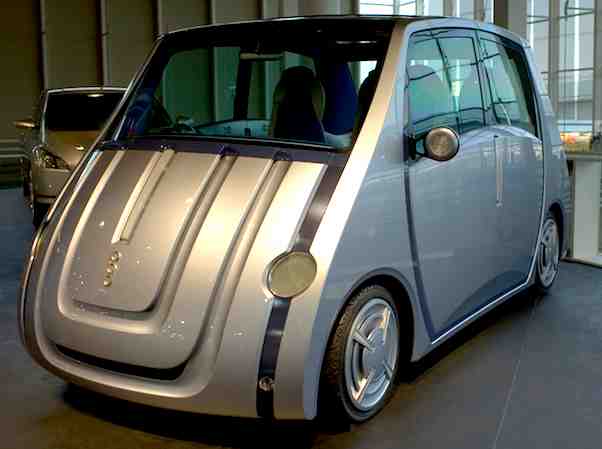
Toyota Motor Corporation’s organizational structure reflects an organizational design that empowers multinational business operations and competitive advantages. As one of the world’s leading automobile manufacturers, Toyota employs its organizational structure to support business goals and strategic direction. This business structure is also linked to the traditional corporate structures used in Japanese businesses. Actual effectiveness in maintaining a strong global presence shows the business ability to use this company structure for optimal efficiency and capacity utilization, equating to the success of Toyota’s operations management. This organizational structure is a contributor to the automaker’s success in the global market.
Toyota’s structure defines the patterns or arrangements in the firm’s resources and processes. This corporate structure facilitates the business competencies and strengths noted in the SWOT analysis of Toyota. These competencies provide advantages over competitors, such as Tesla, Ford, General Motors, BMW, and Nissan.
Characteristics of Toyota’s Company Structure
Toyota has a divisional organizational structure. This business structure is a result of reforms responding to challenges, like safety in cars and trucks. Toyota’s organizational structure now has the following main characteristics:
- Global hierarchy
- Geographic divisions for auto markets
- Product-based divisions
Global Hierarchy. Toyota still maintains its global hierarchy despite its reorganization. However, in the current organizational structure, the company has increased the decision-making power of regional heads and business unit heads. Decision-making processes have become less centralized. Nonetheless, all business unit heads report to the firm’s global headquarters in Japan. This hierarchy in the global corporate structure facilitates the dissemination of strategic decisions and objectives for realizing Toyota’s mission statement and vision statement.
Geographic Divisions. Toyota’s current organizational structure has regional divisions, each of which has a managerial head that reports to the company’s headquarters. Through these regional divisions, the organizational structure enables the automaker to improve products and services according to regional market conditions. Also, Toyota’s marketing mix (4P) involves strategies and tactics based on car types, market demand, and customer preferences in local and regional markets. This geographic approach in the corporate structure allows the company to match its marketing strategies to the actual opportunities in automobile markets around the world. The following are the geographic divisions in Toyota’s structure:
- Japan
- North America
- Europe
- Asia, excluding China
- China
- South and Central America, Oceania, Africa, and the Middle East
Product-based Divisions. Another feature of Toyota’s organizational structure is the set of product-based divisions. This characteristic of the company structure supports the development of automotive brands and product lines. Toyota’s competitive strategy and growth strategies are translated and applied through these divisions. Thus, this corporate structure facilitates business competitiveness and growth through product development and innovation. The following are the product-based divisions of Toyota’s structure:
- Lexus International
- Toyota division for operations in North America, Europe, and Japan
- Toyota division for operations in all other regions
- Unit Center for engine, transmission, and related operations
Toyota’s company structure is a result of significant changes that started in 2013. These changes were seen as a response to the safety issues and corresponding product recalls that started in 2009. In the old company structure, Toyota had a strong centralized global hierarchy that was more like a spoke-and-wheel structure. The company’s headquarters in Japan made all the major decisions. Individual business units had limited communication with each other, and all communications had to go through the headquarters. However, this old corporate structure was widely criticized for slow response times to address safety issues. As a result of the reorganization that was implemented, Toyota’s business structure has evolved to improve organizational capabilities in solving business problems.
Implications of Toyota’s Structure & Organizational Design
Toyota’s organizational structure provides a greater degree of flexibility compared to the old centralized hierarchical company structure. With its current organizational design and business structure, the company is now more capable of responding to regional market conditions. This flexibility empowers Toyota to speedily respond to issues and to provide higher-quality automotive products.
However, the increased decision-making power of regional heads has reduced headquarters’ control over Toyota’s global organization. In a way, business challenges shifted from the flexibility issues of the past organizational structure into the managerial control concerns in the automaker’s current company structure. Still, this organizational structure facilitates business resilience and growth in the automotive industry.
References
- Liu, J. (2025). Marketing strategies of gasoline and electric vehicle enterprises: Toyota and Tesla. In Global Dialogue on Media Dynamics, Trends and Perspectives on Public Relations and Communication (pp. 654-661). CRC Press.
- Toyota Motor Corporation Executives.
- Toyota Motor Corporation Form 20-F.
- Toyota Motor Corporation Governance.
- Tsai-Lin, T. F., Chen, M. H., Chi, H. R., & Chiang, P. S. (2025). The impact of R&D organizational structure on developing technological capabilities and the moderation of R&D slack. Journal of Organizational Change Management, 38(1), 158-181.
- U.S. Department of Commerce – International Trade Administration – Automotive Industry.